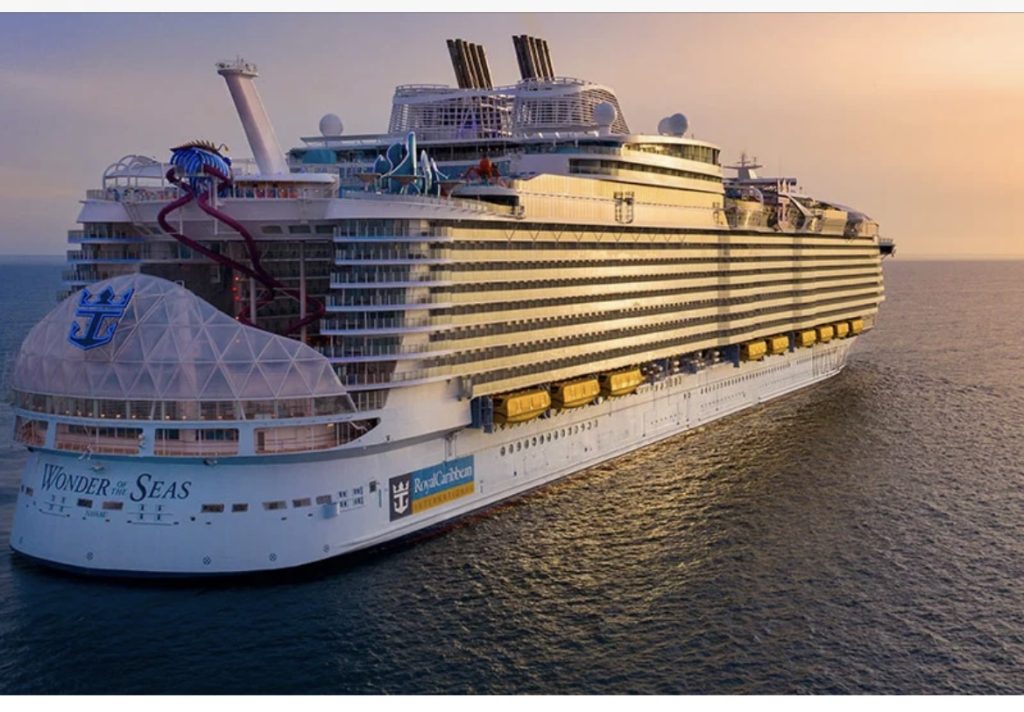
Royal Caribbean Cruise Line, a leader in the global cruise industry, has just made headlines with its latest venture: the inauguration of a brand-new cruise terminal in Barcelona, Spain. This strategic move not only cements Royal Caribbean’s presence in Europe but also significantly boosts Barcelona’s status as a premier cruise port. This development comes at a time when the cruise industry is witnessing a resurgence, with travelers eager to explore the world’s waters once again. The new terminal, Royal Caribbean says ”Will be marvel of modern architecture and sustainability”, is set to redefine the cruising experience for passengers and sets a new benchmark for the industry at large.
Strategic Importance of Barcelona for Royal Caribbean
Barcelona, with its unique blend of cultural heritage, stunning architecture, and Mediterranean charm, has long been a favored port for cruisers from around the globe. Its strategic location on the Spanish coast makes it an ideal starting point for itineraries exploring the Mediterranean, including stops in Italy, France, and the Greek Isles, among others. For Royal Caribbean, establishing a new terminal in Barcelona signifies a commitment to the European market and acknowledges the city’s pivotal role in the cruising ecosystem.
The decision to invest in Barcelona aligns with Royal Caribbean’s strategic vision of enhancing accessibility and providing unparalleled experiences to its passengers. This terminal is not just a point of departure but a statement of luxury and convenience, aiming to make the first and last moments of a cruiser’s journey as memorable as the voyage itself.
Design and Features of the New Terminal
The new cruise terminal, designed by a world-renowned architectural firm, stands as a testament to innovation and sustainability. Spanning several thousand square meters, the terminal is equipped with state-of-the-art facilities aimed at streamlining the check-in and disembarkation process, making it smoother and more efficient than ever before.
Sustainability is at the core of the terminal’s design, featuring solar panels, rainwater harvesting systems, and energy-efficient lighting, underscoring Royal Caribbean’s commitment to environmental stewardship. These features not only reduce the terminal’s carbon footprint but also set a precedent for future infrastructure projects in the cruise industry.
Passenger comfort will be the primary focus in the terminal’s design. From spacious waiting areas in natural light to exclusive lounges for suite guests, every detail has been meticulously planned to enhance the passenger experience. Moreover, the terminal will boast a range of amenities, including retail outlets, cafes, and a dedicated area for children, ensuring that every passenger’s needs are catered to from the moment they step into the terminal.
Economic and Social Impact on Barcelona
The construction of Royal Caribbean’s new cruise terminal in Barcelona represents a significant economic investment in the city and the wider region. It has created hundreds of jobs during the construction phase and will continue to generate employment opportunities in operations, maintenance, and the broader tourism sector.
Beyond the economic benefits, the new terminal is expected to have a positive social impact, increasing tourism and bringing diverse cultural exchanges to the city. Barcelona’s hospitality, retail, and service sectors are poised to benefit from the influx of international visitors, further stimulating the local economy.
The terminal also signifies a partnership between Royal Caribbean and the city of Barcelona, with both parties working together to promote sustainable tourism and cultural exchange. This collaboration is a model for how the cruise industry and local governments can work together to achieve mutual benefits while addressing the challenges of modern tourism.
Challenges and the Path Forward
While the opening of the new terminal is a cause for celebration, it also brings challenges, particularly concerning sustainability and over-tourism. Royal Caribbean and Barcelona authorities are very aware of these issues and are taking proactive steps to mitigate their impact. Measures such as limiting the number of ships in port each day and investing in clean energy solutions are part of a broader strategy to ensure that cruise tourism remains sustainable and beneficial for all stakeholders.
Looking ahead, Royal Caribbean’s new terminal in Barcelona is more than just a gateway to the Mediterranean; it is a symbol of the cruise line’s dedication to innovation, customer service, and environmental responsibility. As the industry continues to evolve, this terminal will undoubtedly play a crucial role in shaping the future of cruising, offering passengers a gateway to explore the world in comfort and style while contributing positively to the host city and its community.
The launch of this terminal is a milestone moment for Royal Caribbean, Barcelona, and the cruise industry at large. It represents a forward-looking vision that balances growth with sustainability, luxury with responsibility, and tourism with cultural sensitivity. As the first passengers embark on their journeys from this architectural marvel, the new terminal is not just a departure point for cruises; it’s a harbinger of the future of travel, setting new horizons for explorers and dreamers alike.






